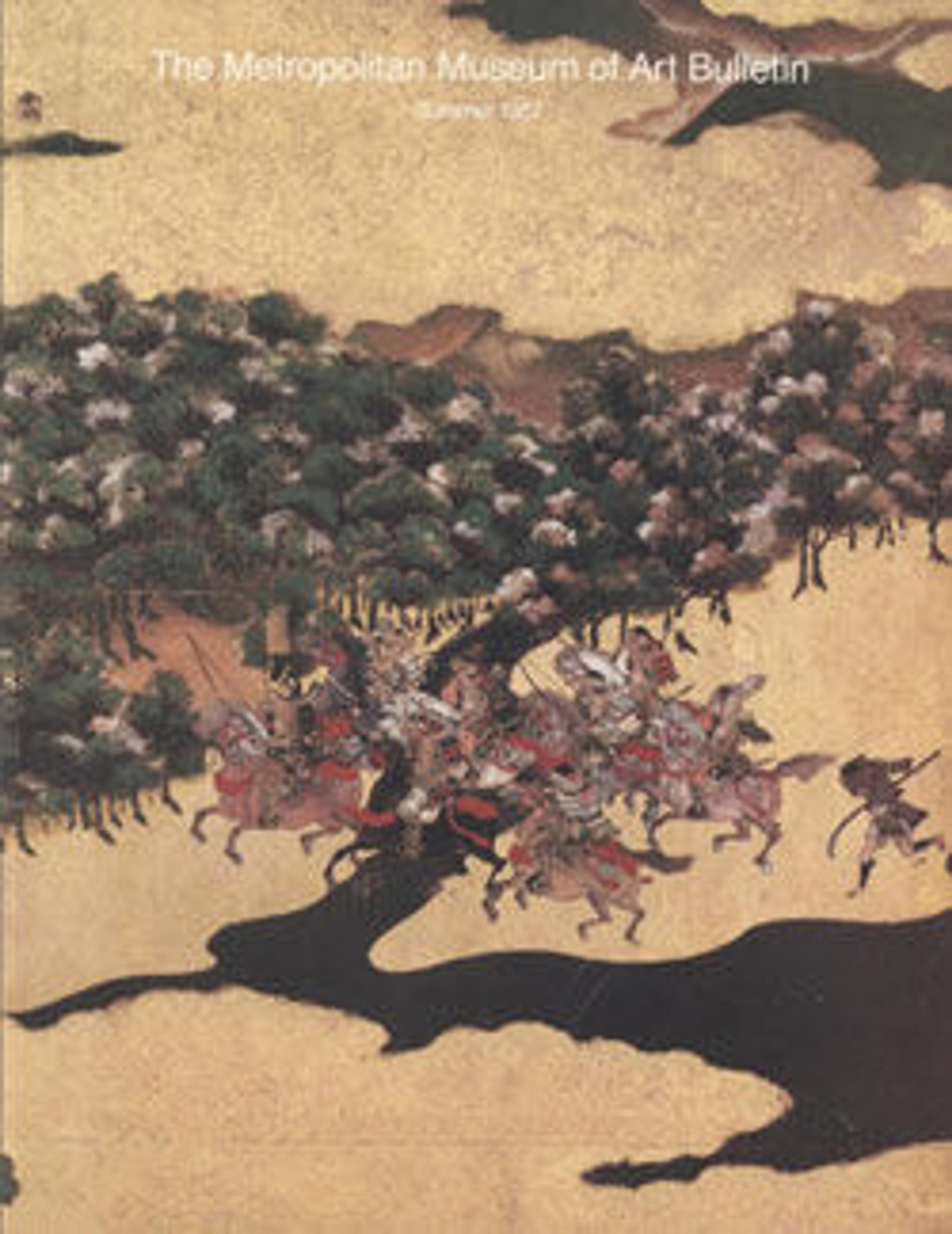Over Robe (Uchikake) with Bamboo
This rare uchikake is the work of Gion Nankai, a well-known poet and painter of the early Nanga (Literati) movement, which had roots in Chinese painting traditions and Confucian studies. Bamboo, vividly painted here in light and dark ink enhanced with a mist of gold powder, was a favored subject of Nanga artists who were largely based in the Kyoto area. Karakane Kōryū (1675–1738), a merchant and literary scholar from Izumi Sano (present- day Osaka), commissioned this over robe for one of his concubines; it was thereafter treasured as a family heirloom. In 1824, on the occasion of the marriage of one of Kōryū’s great-granddaughters, the literati poet Rai San’yō (1780–1832) wrote a laudatory kanshi (a poem written entirely in Chinese characters) about the unsigned garment, thereby establishing its provenance.
Artwork Details
- 祇園南海筆 白繻子地墨竹図打掛
- Title: Over Robe (Uchikake) with Bamboo
- Artist: Gion Nankai (Japanese, 1677–1751)
- Period: Edo period (1615–1868)
- Date: first half of the 18th century
- Culture: Japan
- Medium: Ink and gold powder on silk satin
- Dimensions: Overall: 64 3/4 x 48 7/8 in. (164.5 x 124.2 cm)
Sleeve length: 37 3/4 in. (95.9 cm); sleeve width: 12 3/4 in. (32.4 cm) - Classification: Costumes
- Credit Line: The Harry G. C. Packard Collection of Asian Art, Gift of Harry G. C. Packard, and Purchase, Fletcher, Rogers, Harris Brisbane Dick, and Louis V. Bell Funds, Joseph Pulitzer Bequest, and The Annenberg Fund Inc. Gift, 1975
- Object Number: 1975.268.88
- Curatorial Department: Asian Art
More Artwork
Research Resources
The Met provides unparalleled resources for research and welcomes an international community of students and scholars. The Met's Open Access API is where creators and researchers can connect to the The Met collection. Open Access data and public domain images are available for unrestricted commercial and noncommercial use without permission or fee.
To request images under copyright and other restrictions, please use this Image Request form.
Feedback
We continue to research and examine historical and cultural context for objects in The Met collection. If you have comments or questions about this object record, please contact us using the form below. The Museum looks forward to receiving your comments.
